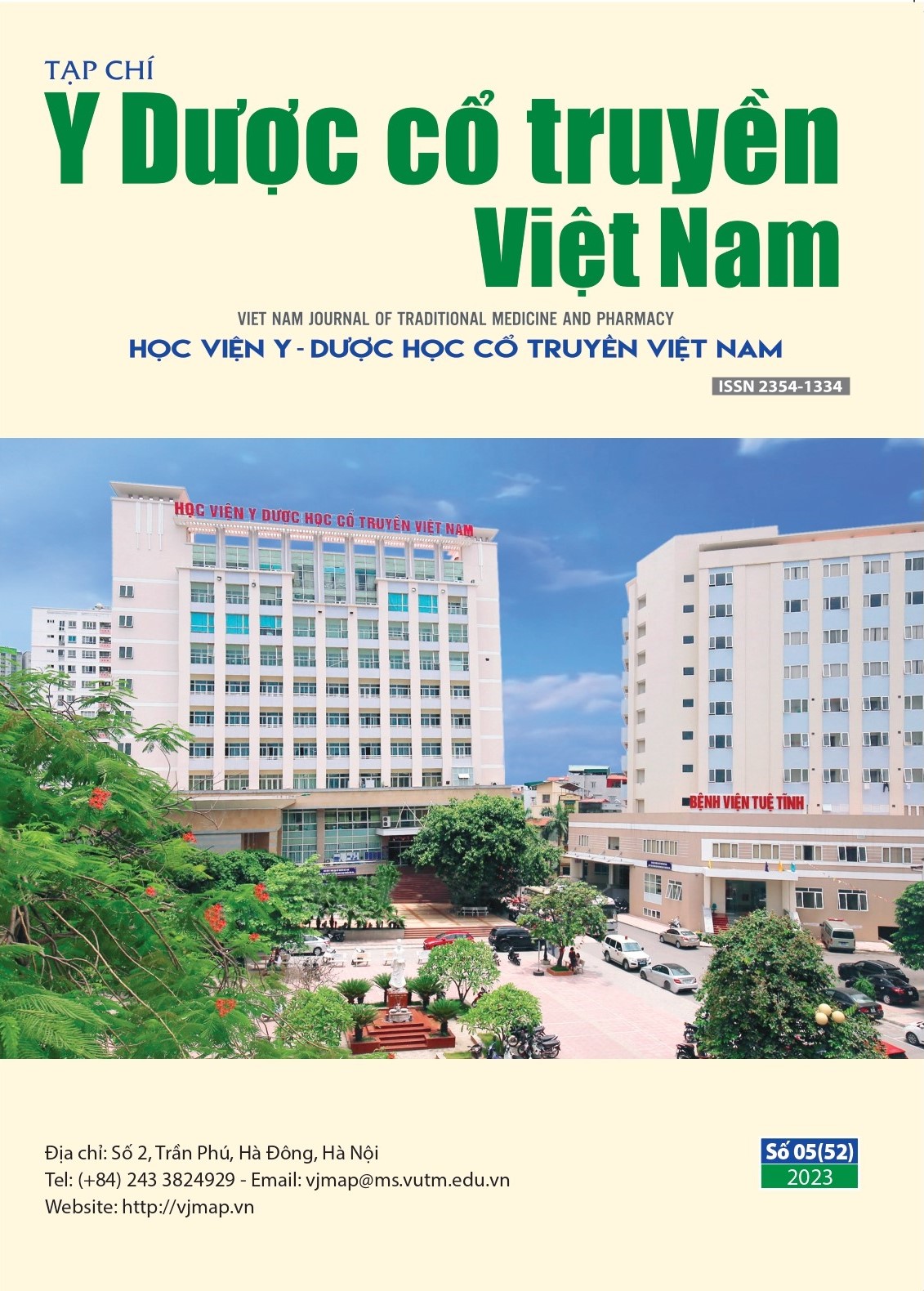Nghiên cứu kết quả bài thuốc Thái bình HV kết hợp điện châm điều trị thoái hóa khớp gối nguyên phát
Main Article Content
Abstract
Objectives: Evaluation of the effectiveness of primary knee osteoarthritis treatment of the Thai binh HV remedy combined with electroacupuncture.
Subjects and methods: A clinical intervention study, comparing before and after with a control group. The study encompassed 60 cases exhibiting stages 1 and 2 of primary knee osteoarthritis, as classified by Kellgren Lawrence, treated at Nghe An Traditional Medicine Hospital from April 2022 to November 2022.
Results: Following a 20-day treatment regimen, the study group demonstrated notably improved results compared to the control. Specifically, the VAS score in the study group decreased by 3.77 ± 1.01 (points), significantly higher than the control group's reduction of 3.03 ± 1.27 (points). Moreover, the research group exhibited a more considerable increase in knee flexion angle by 33.03 ± 7.69 (degrees) compared to the control group's 26.37 ± 10.40 (degrees). The Gothic index showcased a substantial decrease in the research group by 13.83 ± 3.59 (cm), exceeding the control group's 11.13 ± 3.43 (cm). The study group experienced a statistically significant reduction in WOMAC score by 42.07 ± 10.19 (points) compared to the control group's decrease of 35.23 ± 11.23 (points). Additionally, the study group demonstrated a higher decrease in ODI score by 18.10 ± 6.17 (points) compared to the control group's reduction of 11.07 ± 6.99 (points).
Conclusions: Combining Thai Binh HV remedy with electro-acupuncture proves effective in managing primary knee osteoarthritis.
Article Details
Keywords
Knee osteoarthritis, electroacupuncture, Thai Binh HV
References
2. Bộ Y tế. Thoái hóa khớp, Bệnh học cơ xương khớp nội khoa. Nhà xuất bản giáo dục Việt Nam, Hà Nội, 2015, tr.140-153
3. Pal CP, Singh P, Chaturvedi S, et al. Epidemiology of knee osteoarthritis in India and related factors. Indian J Orthop, 2016, 50, pp.518–22.
4. Van Tunen JAC, Dell’isola A, Juhl C, et al. Association of malalignment, muscular dysfunction, proprioception, laxity and abnormal joint loading with tibiofemoral knee osteoarthritis - a systematic review and meta-analysis. BMC Musculoskelet Disord, 2018, 19, pp.273.
5. Nguyễn Thị Như Quý. Nghiên cứu tác dụng chống viêm của Bài thuốc “Thái bình HV” trên động vật thực nghiệm. Luận văn thạc sỹ y học, Học viện Y-Dược học cổ truyền Việt Nam, 2020.
6. Altman R, Alarcón G, Appelrouth D, Bloch D, et al. The American College of Rheumatology criteria for the classification and reporting of osteoarthritis of the hip. Arthritis Rheum, 1991 May, 34(5), pp.505-514.

